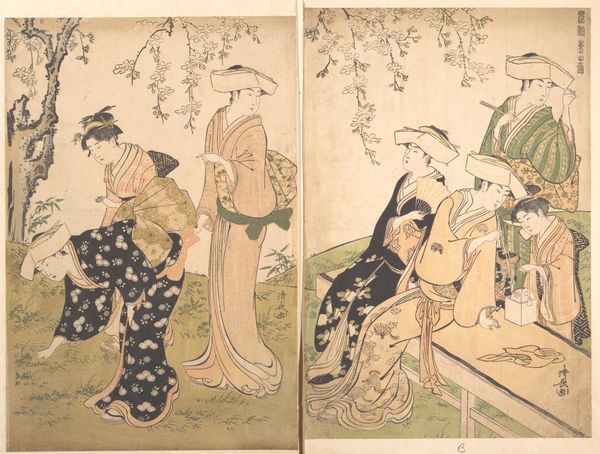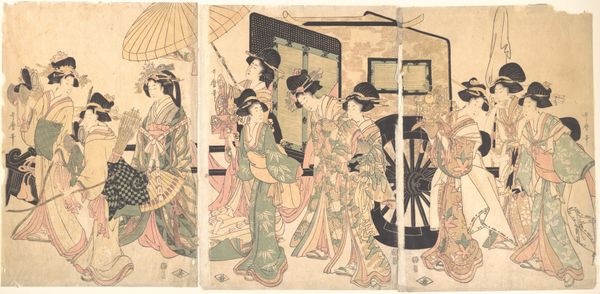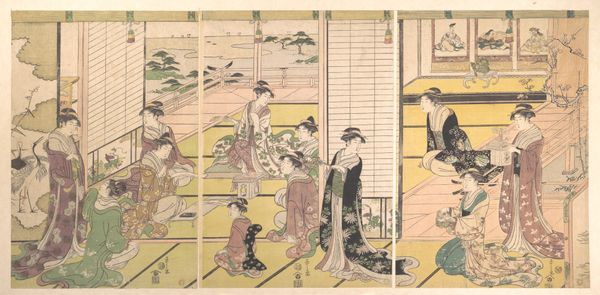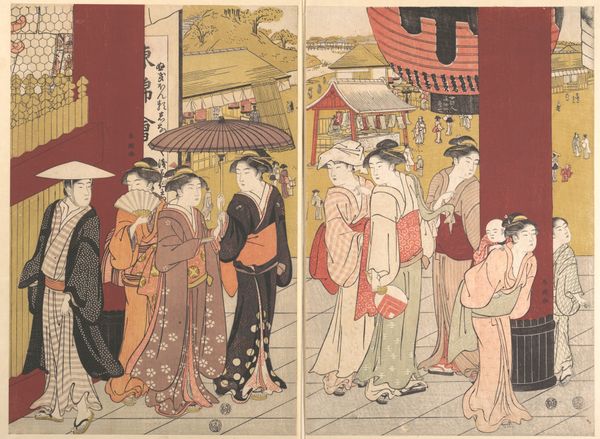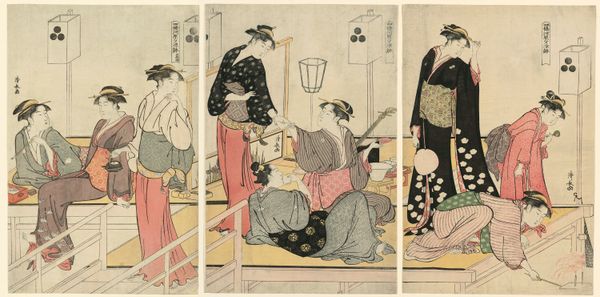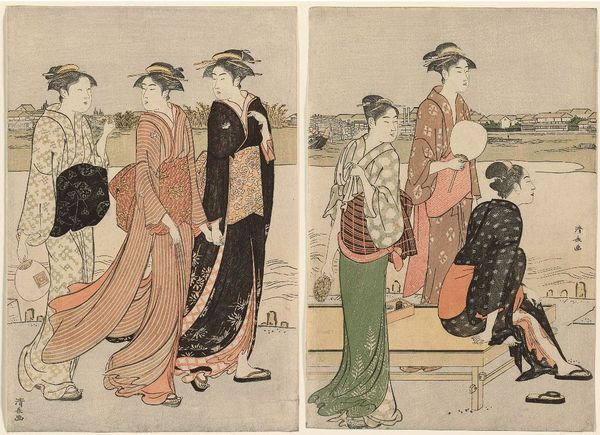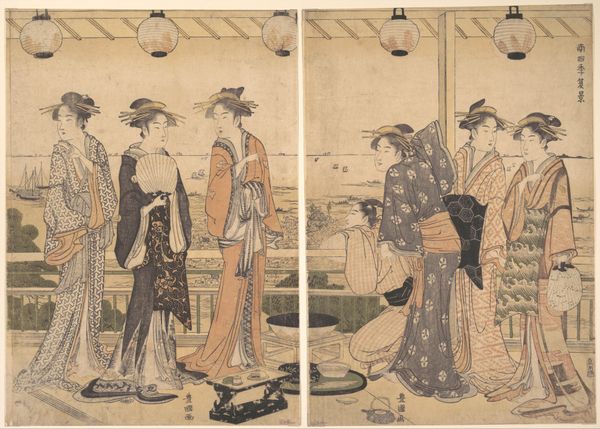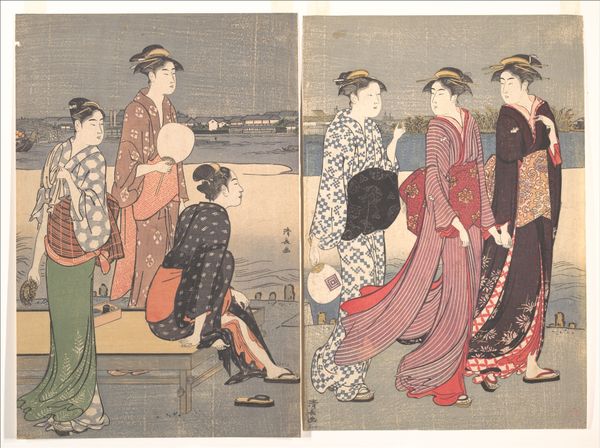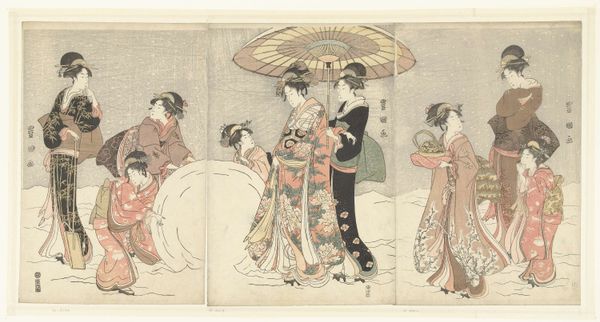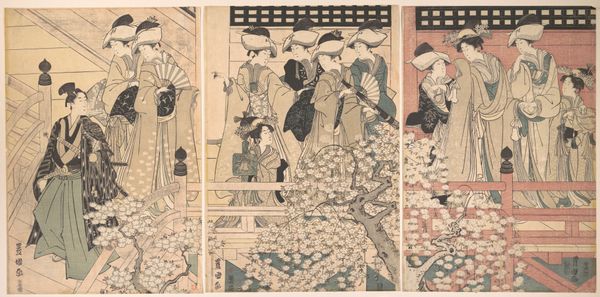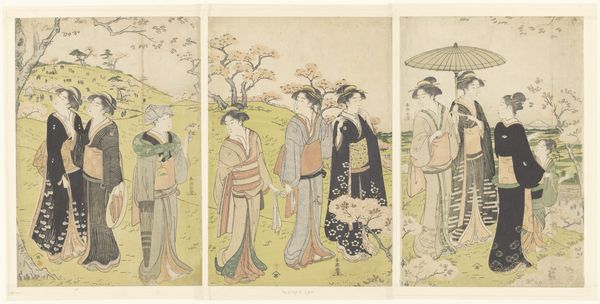
Famous Beauty Escorted by Women of Different Rank 1769 - 1825
0:00
0:00
print, woodblock-print
#
portrait
# print
#
asian-art
#
ukiyo-e
#
figuration
#
woodblock-print
#
genre-painting
Dimensions: A: H. 15 1/16 in. (38.3 cm); W. 9 3/4 in. (24.8 cm) B: H. 15 1/16 in. (38.3 cm); W. 9 13/16 in. (24.9 cm) C: H. 15 1/16 in. (38.3 cm); W. 9 15/16 in. (25.2 cm)
Copyright: Public Domain
Editor: This triptych, "Famous Beauty Escorted by Women of Different Rank," is a woodblock print created by Utagawa Toyokuni I between 1769 and 1825. There's almost a theatrical feel to it, like a scene captured from a play, focusing on social dynamics. How do you read this portrayal of women within the societal structure of the time? Curator: It's crucial to understand ukiyo-e, these "pictures of the floating world," were deeply entwined with Edo-period culture, reflecting urban life, celebrity culture, and often, the geisha districts. Toyokuni's triptych isn’t merely a portrait but a social commentary. How does the arrangement, with the central figure seemingly elevated by her attendants, reinforce hierarchical norms? Editor: The careful details in clothing, from the elaborate kimonos to the hair ornaments, emphasize status. I wonder about the parasols— are they purely functional, or do they signal something more? Curator: Absolutely, the parasols are layered with meaning! While practical for sun protection, they also create a visual distinction. Consider, too, the power dynamics embedded in this procession. Does this image, for example, perpetuate or critique the roles women were expected to play? Editor: I see your point. I initially focused on the surface beauty but missed the subtle cues about social power. Curator: And how these visual codes were designed to communicate messages about wealth and social standing to contemporary viewers, through these commercially produced images. Editor: Reflecting on this, I realize the image acts as a fascinating document, showing us the intertwined relationship of art, commerce, and social messaging. Curator: Indeed. Ukiyo-e prints offered a glimpse into a very particular moment in history. This piece reveals not just faces and costumes, but also the mechanisms of power within a closed society.
Comments
No comments
Be the first to comment and join the conversation on the ultimate creative platform.
